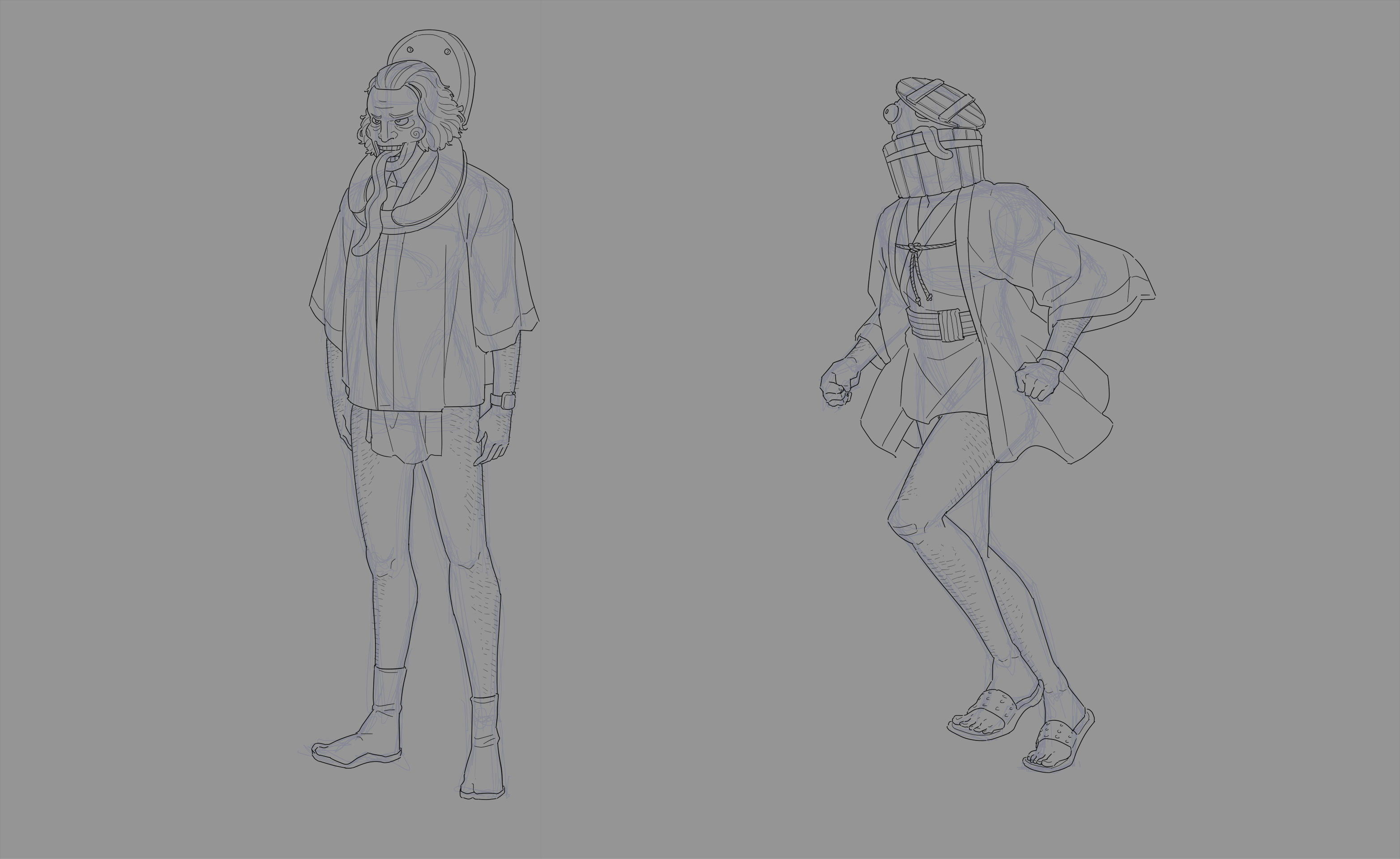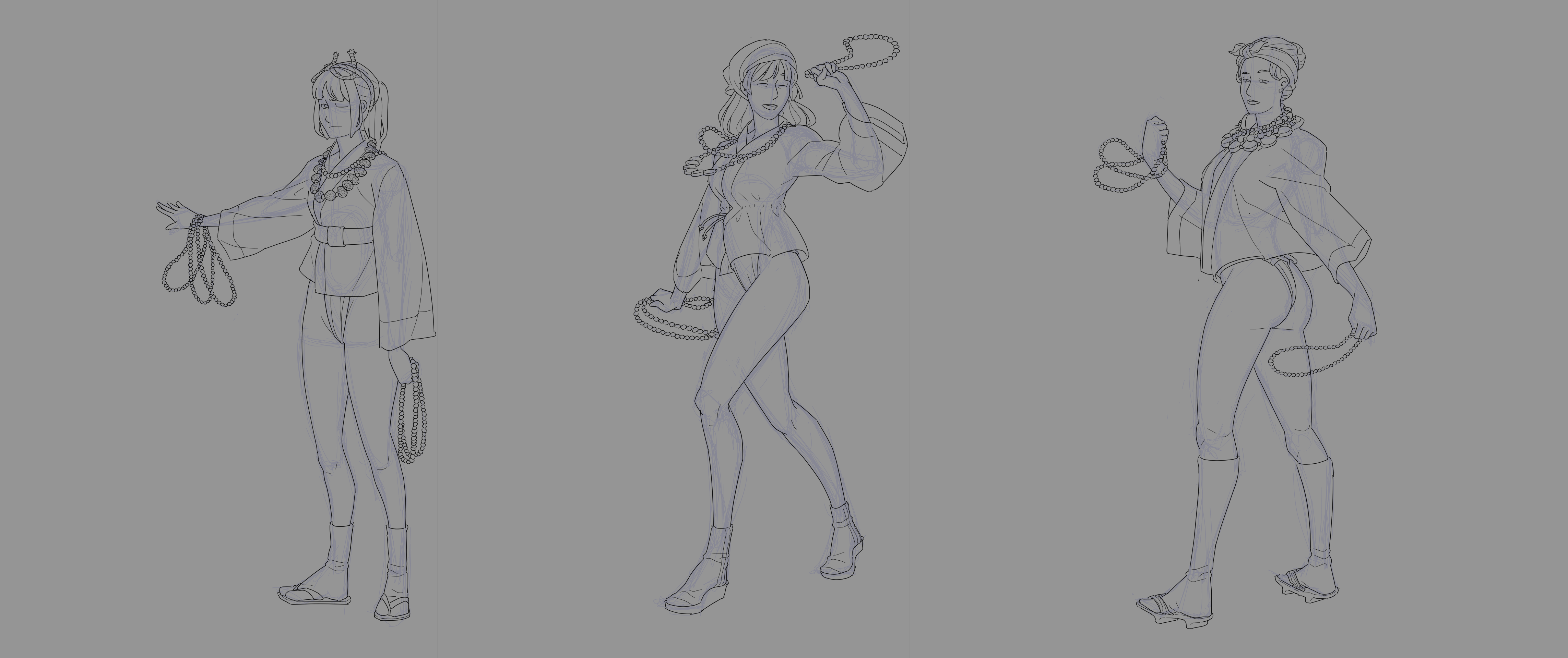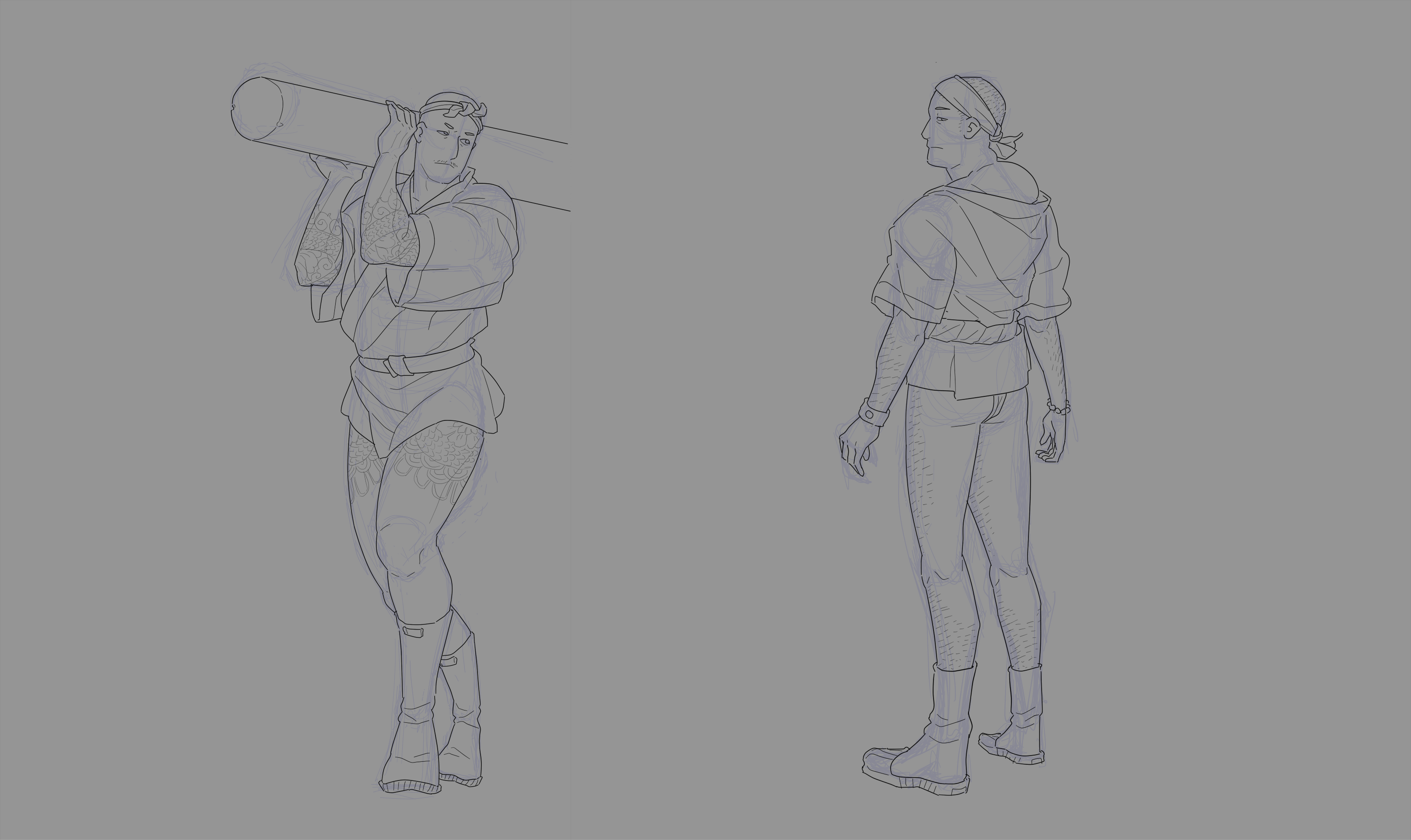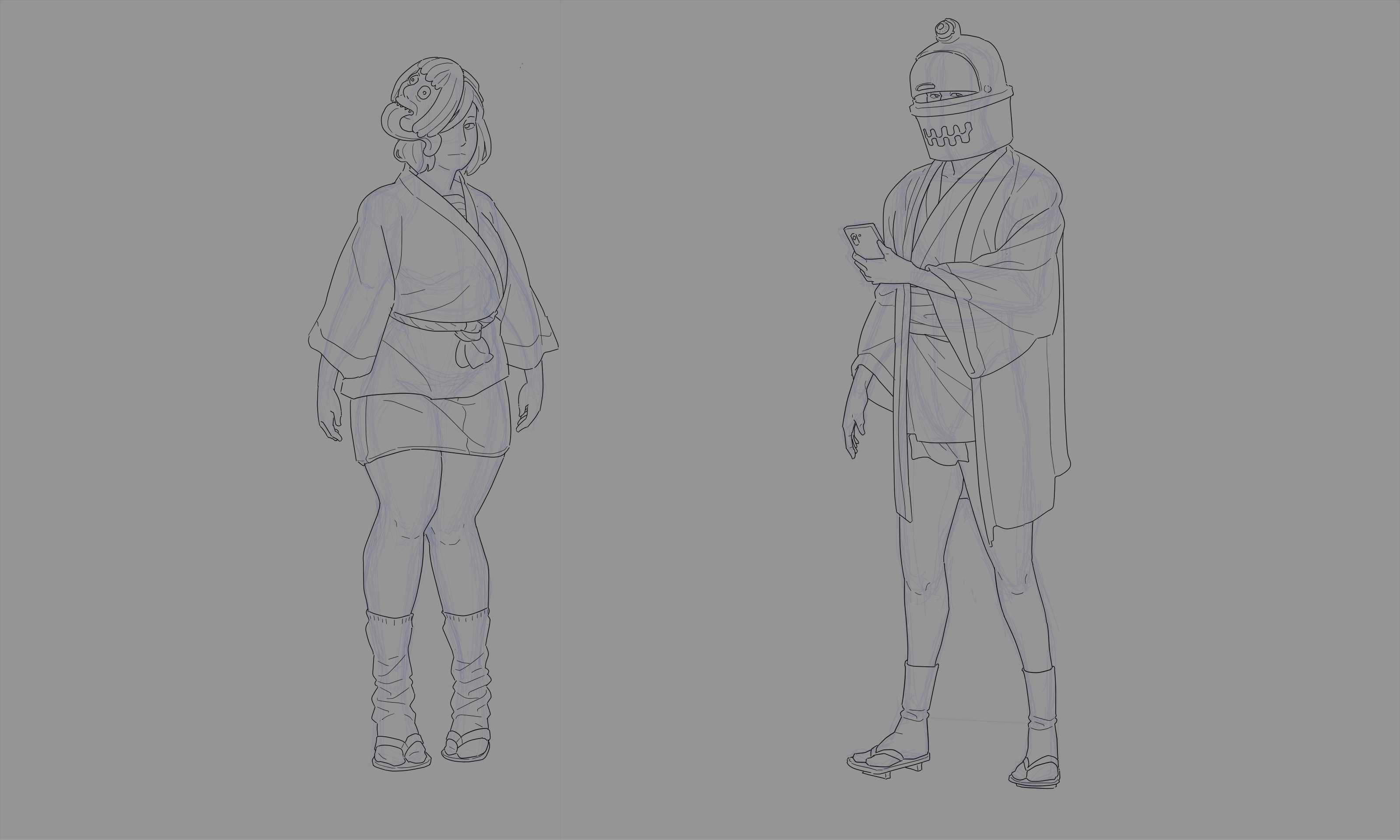Legends of yokai stories can be found all across
Eiennohana, venerated by some and feared by others. For a few settlements, the yokai represent the perfect opportunity to have some fun. Since XXX DE, certain communities have held a yokai festival venerating and warding against the Akaname. This red skinned goblin-like yokai is attracted to the filth that collects in bathtubs and bathrooms. The Akaname festival is held to venerate the spirit to prevent its wrath, but also to ward against its presence by demonstrating cleanliness. Held during the summer solstice, the beginning of the hottest time of the year, the festivities are famous for their water focused events.
Festival participants often dress up in costumes representing the Akaname spirit. These costumes are often meant to be laughed at, for the spirit is known to have a dirty sense of humor. (Art by UWU-b011)
The First Day
The official start of the Akaname festival begins with an important religious ceremony, initiated by the head priest of the area's most prestigious shrine. After ritually washing his hands and face, the head priest begins to chant, inviting the Akaname to enter a specially prepared
mikoshi as a guest of honor. The priest then hands off the mikoshi to the members of the
local yakuza clan, who carry and escort the mikoshi for the rest of the festival.
The festival's more publicized beginning starts when the Daigyōretsu (大行列, literally "large parade") is held. Participants, ritually cleansed and wearing white clothing with rainbow highlights, line the streets as the mikoshi is paraded past them. Members of the parade dressed as yokai dance, play music, and throw buckets of water at the crowd who throw buckets of water of their own in return. One of the biggest crowd pleasers is when the women arrive, dressed in
happi coats and
etchu-fundoshis. Yokai decorated bead necklaces (sold by the yakuza prior to the festival) are tossed to the women, with whoever receiving the most by the end of the festival winning a substantial cash prize.
Many a child has been mortified to see their own mothers in the woman's procession, but in most villages the middle aged women consider it a point of pride to catch more bead necklaces than the younger girls. (Art by UWU-b011)
The Second Day
On the following day, participants follow the mikoshi to a field where the day's attractions and competitions are held. Attractions include water balloon fights, water slides, and sprinkler fountains. The competitions include water polo, swim meets, power washing, fireman bucket brigade challenges, boat racing, and
water jousting.
The second day's main event starts at noon, commonly known as the Water Charge. Contestants line up at one end of a 100 meter field, and, when the bell rings, try to reach the other side. Powerful streams of water from fire hoses or water cannons are directed at the contestants, slowing or knocking them to the ground. Anyone who makes it to the other side is considered a winner. While individual contestants have on occasion won, the most common strategy is to advance in disciplined teams. Contestants in front are chosen for their toughness and tenacity, while their team standing behind them guides and pushes them forward. It is said that the practice originated with the
Nagasawa-gumi yakuza clan as a way to demonstrate to local lords that the traditional use of water cannons by police as anti-mob tools would be ineffective.
Carrying the mikoshi shrine is a coveted position in Eiennohanan society. Over the years the strain can cause large callouses to develop on the shoulders, with some shrine carriers deliberately positioning the weight to enlarge the callous. (Art by UWU-b011)
The Third Day
The Akaname festival's most important evens occur on third and last day. The yakuza and celebrants escort the Akaname mikoshi back toward the head shrine early in the morning. The procession follows a different path each year, with stops chosen to highlight important or up and coming businesses and individuals. Everywhere the procession goes it finds streets and buildings meticulously cleaned and repainted. Sometimes paths are chosen in order to shame the businesses and residents along the route into cleaning and repairing their buildings. Upon the mikoshi's arrival the shrine's head priest recites a song, apologizing for the community's lack of filth for the Akaname to feast upon and inviting it to return the next year on the chance conditions might deteriorate. The end of the festival is celebrated at night with food stalls and dances.
Festivals are a break from the stress of colonial life and proper tones of Eiennohanan society. (Art by UWU-b011)







Comments